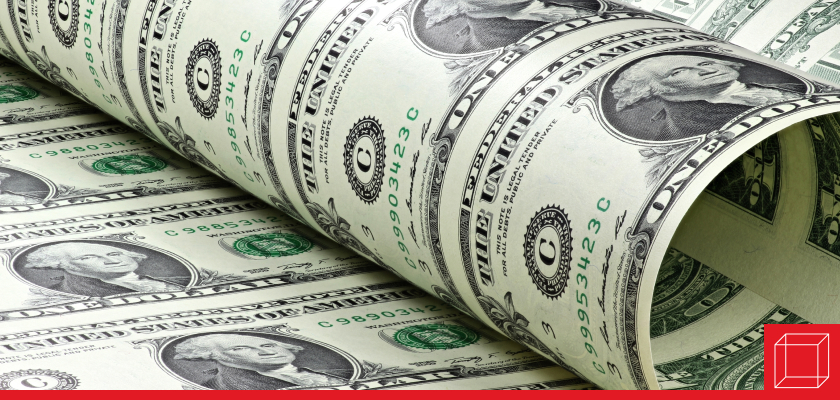Stablecoins: The Future of Digital Dollars?
Stablecoins are quickly becoming one of the most talked-about topics in the world of finance and cryptocurrency.

Stablecoins are quickly becoming one of the most talked-about topics in the world of finance and cryptocurrency. Unlike Bitcoin, which is known for its volatility, stablecoins are designed to have a predictable value. As legislation moves through Congress and major players like JPMorgan and Fiserv launch their own digital dollar tokens, stablecoins are gaining momentum as a new kind of digital financial infrastructure.
What Is a Stablecoin?
A stablecoin is a type of cryptocurrency that is tied to the value of a traditional asset, most often the U.S. dollar. For every unit of a stablecoin, there is typically one U.S. dollar or equivalent held in reserve. This makes stablecoins much less volatile than other cryptocurrencies such as Bitcoin or Ethereum. Because of this system, stablecoins aim to combine the efficiency and speed of blockchain-based transactions with the price stability of fiat currency.
Stablecoins vs. Bitcoin: What’s the Difference?
While both stablecoins and Bitcoin are built on blockchain technology (a secure digital ledger that records transactions across a distributed network), they serve very different purposes. Bitcoin (one type of cryptocurrency) is not tied to any real-world asset, which makes its price highly volatile. It’s often treated as a speculative investment or a digital store of value. In contrast, stablecoins are designed to maintain a consistent value, usually by being tied to a traditional currency like the U.S. dollar.
Stablecoins are backed by actual reserves, such as cash or short-term U.S. Treasury securities, which helps ensure their price remains steady. This makes them useful for everyday transactions, cross-border payments, and holding digital cash. Bitcoin, on the other hand, is not backed by reserves and can experience large price swings in a short period of time. In short, Bitcoin is more like digital gold, while stablecoins aim to be digital dollars.
Regulation
The interest in stablecoins comes as the Senate passed new legislation called the GENIUS Act (short for Guiding and Establishing National Innovation for U.S. Stablecoins). The GENIUS Act still has to be voted into law once the Senate and House agree to any changes made in conference. The act aims to create a regulatory framework for stablecoin issuers, ensure that stablecoins are backed by high-quality reserves such as U.S. Treasury bills or insured bank deposits, and establish consumer protections and fraud safeguards. The passage of this bill would mark a major step in legitimizing stablecoins in the eyes of regulators, businesses, and investors.
Big Banks and Big Tech
Stablecoins are no longer just the domain of crypto startups. Major institutions are entering the space, signaling that they see stablecoins as more than a passing trend. These moves show that stablecoins are not just theoretical, they are becoming part of mainstream financial operations.
JPMorgan has launched JPMD, a deposit token backed by U.S. dollars, designed for public use. The bank plans to issue JPMD on Base, a blockchain operated by Coinbase. JPMorgan may benefit by growing its deposit base and potentially earning interest on the underlying reserves. The bank is also positioning JPMD for cross-border and multi-bank transfers, opening up international use cases.
Payment tech company Fiserv announced plans to launch FIUSD, a stablecoin aimed at banks and merchants. Integrated into Fiserv’s massive global payments infrastructure, FIUSD could streamline transactions, remittances, and digital dollar access. It’s being built with fraud monitoring, risk controls, and compatibility with fast blockchains.
Walmart and Amazon are exploring launching their own U.S. dollar-backed stablecoins, aiming to bypass costly credit card interchange fees and accelerate payment settlements. The initiative hinges on the passage of the GENIUS Act. If adopted, these retailer-issued stablecoins could pose serious competition to banks and card networks like Visa and Mastercard, though unresolved questions remain around regulation, asset backing, and security.
The Global Impact
Stablecoins could dramatically change how international investors and consumers interact with the U.S. dollar. In countries with capital controls, such as China, India, or Nigeria, citizens are limited in how much foreign currency they can access or transfer each year. Stablecoins offer a potential workaround. If local crypto exchanges support USD-backed stablecoins, it becomes much easier to store and move money in digital dollars, even in restrictive environments.
For international investors, this could mean easier access to U.S.-based assets without dealing with traditional wire transfers, currency conversion fees, or delays. In this way, stablecoins could reinforce the dominance of the U.S. dollar globally by making it easier and cheaper to use in places where physical dollars are hard to come by.
Risks and Challenges
Despite the buzz around stablecoins, there are risks. As more people move money from traditional savings accounts into stablecoins, banks may see shifts in the type of deposits they hold.
- Retail vs. Institutional Deposits: Money parked in stablecoins could turn into uninsured institutional deposits when held at partner banks. This creates volatility and could impact bank stability.
- Regulatory Concerns: The 2023 collapse of Silicon Valley Bank showed how quickly a bank can fail when large amounts of money are withdrawn all at once, especially by tech firms and institutional clients who can move funds instantly. Regulators worry that stablecoins, which allow for real-time transfers outside of traditional banking systems, could cause similar problems. If companies or investors suddenly lose confidence in a stablecoin or its issuer, they might all try to cash out at the same time, causing a classic “run” on the underlying assets. This could destabilize financial markets, especially if stablecoins become widely used for payments and store large amounts of value.
- Monetary Policy: It is still not clear how stablecoins might affect the Federal Reserve’s ability to manage monetary policy. There could be unintended consequences that arise as stable coins become mainstream.
- Pressure on Small Banks: As stablecoins become more appealing, larger institutions may benefit, but smaller or regional banks could struggle to compete.
The Future of Payments
Stablecoins could disrupt the future of payments. They may eventually allow instant, 24/7 settlement of funds, reducing reliance on outdated banking systems. With tech firms and banks alike betting big on the trend, the future of money may be both digital and dollar-based. Backed by real assets and built on blockchain, stablecoins offer a way to digitize the dollar while maintaining trust and stability. As the GENIUS Act moves through Congress and major players roll out their coins, stablecoins are poised to play a much bigger role in the global economy.
In the Classroom
This article can be used to discuss cryptocurrency (Chapter 15: Money and the Financial System).
Discussion Questions
1. What is the difference between Bitcoin and stablecoins?
2. Why would retailers such as Amazon and Walmart be motivated to issue stablecoins?
3. What are some of the potential risks of widespread stablecoin adoption?
This article was developed with the support of Kelsey Reddick for and under the direction of O.C. Ferrell, Linda Ferrell, and Geoff Hirt.
Brett Ashcroft Green, "JPMorgan: Dimon's Crypto U-Turn, GENIUS Act On Deck," Seeking Alpha, June 19, 2025, https://seekingalpha.com/article/4795977-jpmorgan-dimons-crypto-u-turn-genius-act-on-deck
Gina Heeb, AnnaMaria Andriotis, and Josh Dawsey, "Walmart and Amazon Are Exploring Issuing Their Own Stablecoins," The Wall Street Journal, June 13, 2025, https://www.wsj.com/finance/banking/walmart-amazon-stablecoin-07de2fdd
Liz Kiesche, "Visa, Mastercard Stocks Slide, Coinbase Jumps After Stablecoin Bill Passes Senate," Seeking Alpha, June 18, 2025, https://seekingalpha.com/news/4459492-visa-mastercard-stocks-slide-coinbase-jumps-after-stablecoin-bill-passes-senate
MacKenzie Sigalos, "Fiserv Debuts Bank-Friendly Stablecoin as Fintechs Join Digital Dollar Race," CNBC, June 23, 2025, https://www.cnbc.com/2025/06/23/fiserv-stablecoin-digital-dollar.html
Rob Williams, "Stablecoins Could Reshape Banking, but Not Without Disruptions," Seeking Alpha, June 15, 2025, https://seekingalpha.com/news/4458206-stablecoins-could-reshape-banking-but-not-without-disruptions



